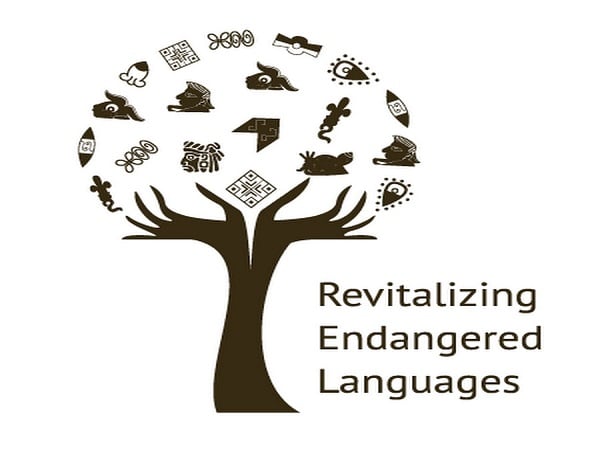Language is more than just a way of communicating; it is an essential component of human culture, identity, and tradition. Languages have evolved, adapted, and extended over history, influencing our perspectives on the world and relationships with one another. However, the rapid pace of globalization and cultural homogeneity has resulted in the endangerment and even extinction of innumerable languages, compromising our planet's rich linguistic diversity. This article explores the concepts of language preservation and endangered languages, delving into their significance, causes, consequences, and strategies to safeguard linguistic heritage.
Defeat Voldemort - Be a Potterhead!
Preserving Language
Language preservation refers to purposeful attempts to preserve, revitalize, and protect endangered languages. This technique has a multidimensional approach, including recording, education, advocacy, and cultural understanding. The goal is not just to conserve linguistic diversity, but also to protect the cultural knowledge, practices, and histories embedded in languages
Tips to Secure a language
- Documentation: It is vital to record endangered languages in written, audio, and video media. Linguists and anthropologists collaborate with local speakers to record vocabulary, grammar, stories, and cultural practices, creating essential resources for future generations.
- Language Revitalization: Language revitalization is the effort to recover and use endangered languages in daily life. This might include language immersion programs, community classes, and the incorporation of the language into schools and media.
- Cultural Engagement: Promoting cultural activities tied to the language, such as traditional ceremonies, songs, storytelling, and art, can help reinforce the importance of the language in maintaining cultural identity.
- Advocacy: Raising awareness about endangered languages and advocating for their recognition and support at local, national, and international levels is essential for garnering resources and attention.
Prove It - Win an Oculus Quest 2!
Causes of Language Endangerment
Only a small number of people, usually from older generations, speak an endangered language, which is on the verge of being extinct. Language endangerment has a wide range of complex causes.- Globalization: Dominant languages, which are typically tied to economic power, have influenced lesser languages as the world has grown more interconnected. In pursuit of better economic opportunities, many speakers of endangered languages relocate to languages that are more widely spoken.
- Cultural Assimilation: When communities merge into dominant cultures, subsequent generations could see less value in their mother tongues and instead choose to learn languages linked to social progress.
- Displacement and Migration: As communities are uprooted and dispersed, conflict, forced migration, and urbanization can impede the transmission of traditional languages.
- Lack of Education: Insufficient tools and regulations for education can prevent the transfer of
Consequences of Language Extinction
The extinction of languages has far-reaching consequences beyond communication:
- Cultural Erosion: Languages encapsulate unique worldviews, histories, and cultural practices. Losing a language means losing a repository of cultural knowledge and identity.
- Biodiversity of Ideas: Like biological diversity, linguistic diversity contributes to a broader range of ideas and viewpoints. Losing languages reduces our collective potential for creative thought.
- Social Cohesion: Language is a unifying force within communities. Its loss can lead to a breakdown of social ties, as language often binds people through shared experiences and understanding.
- Scientific and Linguistic Insights: Every language offers a unique window into the structure of human cognition and communication. Linguists study endangered languages to uncover insights about the human mind and linguistic evolution.
Efforts to Preserve Language
Various organizations, governments, and communities are actively engaged in language preservation:
- Documentation Projects: To document endangered languages and make information available online, groups such as the Endangered Languages Project work with communities and linguists.
- Restoration Programs: To involve younger generations, indigenous communities frequently spearhead revitalization initiatives by establishing language immersion schools, workshops, and cultural festivals.
- Legislation and Policies: Some governments recognize the importance of preserving their linguistic heritage and enact policies to support endangered languages through education and media.
- International Collaboration: Organizations like UNESCO support initiatives to protect endangered languages through awareness campaigns, funding, and policy recommendations.
Lastly, language preservation requires a delicate balance between the past and the future. The extinction of languages represents a loss of cultural richness and heritage, influencing not just verbal expression but also how we perceive the world. The efforts to protect endangered species
Languages are critical to sustaining the intricate tapestry of human culture and knowledge. By preserving, restoring, and advocating for endangered languages, we may ensure that our linguistic inheritance survives and contributes to a more diverse and interconnected world.
Register & Claim Potterhead Status!

 Students/Staff
Students/Staff Parents
Parents ElevatEd
ElevatEd




-Nov-18-2025-03-57-47-3267-AM.png?width=360&length=360&name=401x226%20(6)-Nov-18-2025-03-57-47-3267-AM.png)



-Jul-22-2025-03-16-52-8797-AM.png?width=360&length=360&name=401x226%20(6)-Jul-22-2025-03-16-52-8797-AM.png)






